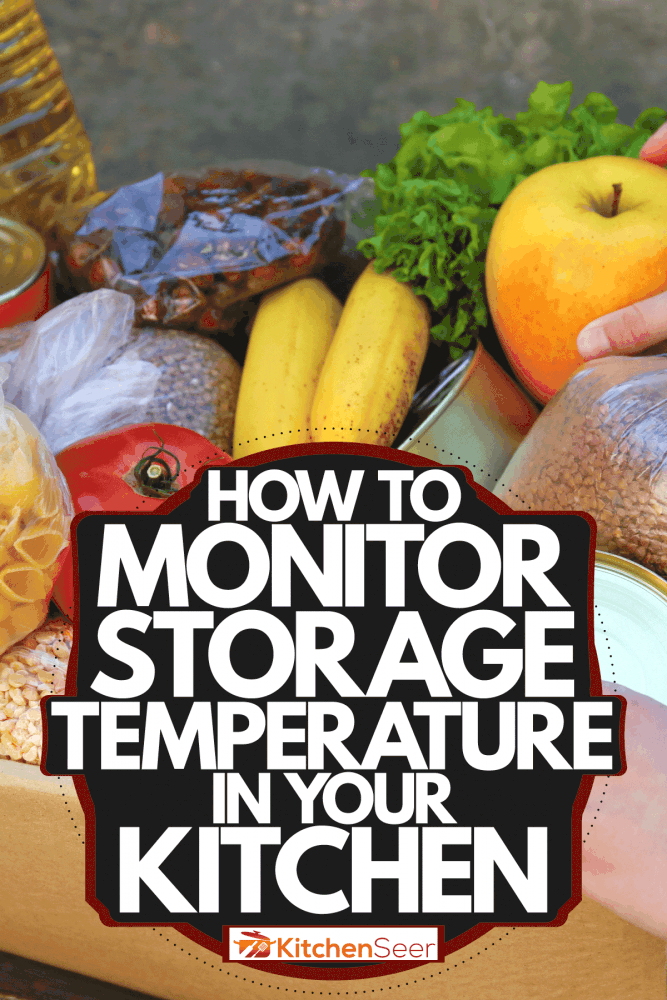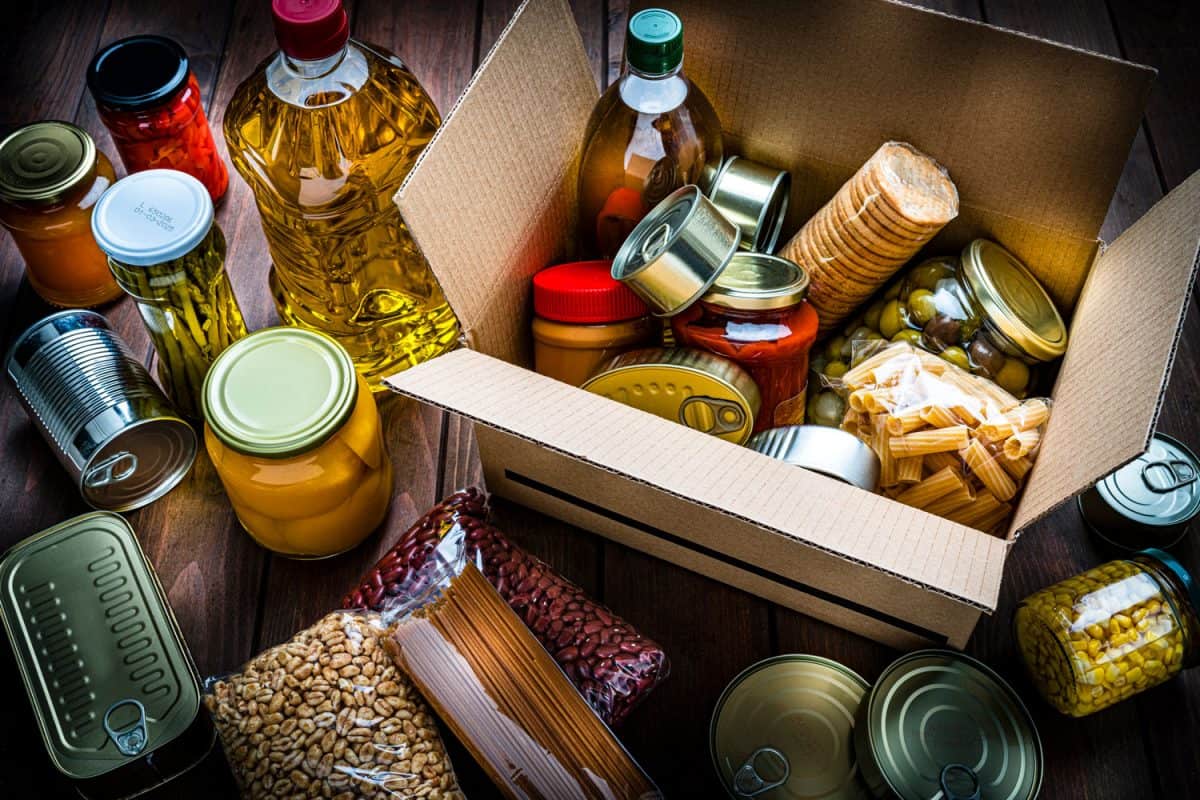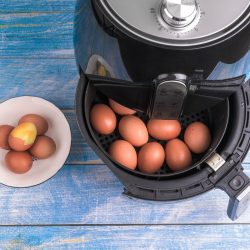The way you store your food can make or break your wallet. Some foods need to be stored at a cool temperature while others need to be stored in much colder temperatures. Failure to do so can make your food go bad quicker, resulting in wasted food and therefore wasted money. But how does one keep track of food storage temperatures? We’ve done the research to provide you with the solution to this problem.
Check your food storage temperatures by examining the thermometer. You’ll also need to know the appropriate food storage temperatures and the recommended temperatures of certain foods.
While it all may seem confusing, we’ll break down these food handling guidelines for you. Continue reading to learn how to keep your food properly stored and at the correct temperatures.

Contents
How Often Should You Check the Food Storage Temperatures?
Keeping a close eye on the temperature of where your food is stored is crucial. Not doing so might make you miss that the storage area isn’t at the right temperature. That could put your health at risk when you consume the food later.
Most likely, your fridge or freezer will have a thermometer installed showing you the current temperature. For those of you working in the food industry, you should have a little pocket thermometer to check your food as well.
It’s commonly recommended that you check food storage temperatures every four hours. However, if you work in food service, we suggest every two hours instead. This is because you’re more likely to catch a temperature error.
The more you check, the likelier it is that you can spot something wrong. The sooner you spot something wrong, the quicker you can remedy the situation. The faster you fix the problem, the safer your food will be. This will significantly reduce the chances of foodborne illnesses when handling the food.

To get an accurate temperature check, you need to check two regions of your food storage: the coldest part of your hot food storage and the hottest part of your cold food storage. Checking these regions will give you an accurate overall temperature of your food storage unit.
What is the Food Danger Zone Temperature?
To keep food at its freshest, it must be kept at the correct temperatures. Those exact temperatures depend on whether a food is meant to be stored cold or hot.
Foods meant to be stored in the fridge should be stored at temperatures no higher than 41 degrees Fahrenheit, or 4 degrees Celsius. Foods that are meant to be frozen must be stored at or below 0 degrees Fahrenheit or -18 degrees Celsius.
Hot foods must be stored at temperatures no lower than 135 degrees Fahrenheit. Note that the hot food storage must already be at or above this temperature before storing food in it. Also, remember to stir, flip, or move around the food, so the heat is evenly distributed.
Failing to store food in the above-listed temperatures puts your food in the danger zone. According to ServSafe, the danger zone is when foods are stored between 41 and 135 degrees Fahrenheit.
Harmful bacteria grow more within this temperature range. They grow more rapidly between 70 and 125 degrees Fahrenheit.
Foods that have been in the danger zone for four hours need to be thrown away. That’s why you must pay attention to the times when food is placed in storage. However, in your own home, you’ll probably have eaten the food long before the four-hour limit is reached.
Keep in mind that bacteria can still be present in food even at the proper temperatures. But the bacteria won’t grow nearly as fast when the food is properly refrigerated, frozen, or heated.
What Are High-Risk Foods That Can Be Easily Contaminated?
This section will discuss the categories of foods that have a high risk of foodborne illnesses if mishandled.
Poultry
These are foods like chicken, turkey, duck, and more. Poultry is prone to be contaminated with salmonella. That’s one of the most common ways people get sick from improperly prepared poultry.
Avoid this by ensuring the poultry isn’t consumed raw or undercooked. When prepping it, don’t wash it; you’ll end up spreading the bacteria around the sink. Also, make sure to clean and sanitize whatever the raw poultry touches.
Eggs
Along with poultry being high risk, eggs are contaminable as well. Eggs are so versatile; you can eat them scrambled, over easy, benedict, sunny side up, and plenty more. Because eggs can and are often eaten undercooked, foodborne illness is highly possible.
Check the egg carton before you buy it; look for cracks and discoloration. You should also cook it entirely. But if you eat the eggs slightly undercooked, make sure the yolk or white doesn’t come in contact with anything it’s not supposed to during the prep or cooking process.
Veggies
Vegetables don’t need to be cooked, so you’re probably curious as to how this is a high-risk food. It’s because harmful substances can rest on the surface.
So if you don’t wash or cook your veggies, you could become ill by eating these foods raw.
Dairy
Cheeses and unpasteurized milk can easily cause you sickness if mishandled. Unpasteurized milk could host several bacteria since it hasn’t been heated to kill them off.
Cheese needs to be stored in safe temperatures at all times before usage. The bacteria found in cheese, if any, are more resistant to heat when cooking. Unlike other foods, the best way to keep cheese safe is to prepare it in a clean environment with clean hands.
Seafood
We know many of you love sushi. But there’s a reason why sushi restaurants list a warning about consuming raw foods. Seafood needs to be properly stored from the minute they’re caught in the water.
Because different sea creatures live in various spots in the ocean, they’re exposed to various bacteria and toxins.
Deli Food
These are foods like sliced ham, turkey, pepperoni, salami, bacon, and roast beef. You must store these in proper temperatures (under 41 degrees) since you likely won’t cook these foods before eating them.
Who Monitors Food Safety in the United States?
The United States has a few selected federal agencies dedicated to ensuring food safety.
Food Safety and Inspection Services (FSIS)
The FSIS agency was founded back in 1862 as part of the U.S. Department of Agriculture. They played a key role in meatpacking and meat inspection during the late 1800s.

In recent years, an E.coli outbreak in 1993 forced the agency to devote their inspections to be more science-based. With the help of the Hazard Analysis and Critical Control Point (HACCP), foodborne illnesses have noticeably gone down since 1996.
U.S. Food and Drug Administration (FDA)
Have you ever read the nutritional facts on food labels and wondered who provided this information? The FDA is responsible for this.
Their role is to ensure that all foods not checked by the FSIS are safe and clean to consume. They then provide the nutritional values of all foods, so people know what’s in the food they’re eating.
Center for Disease Control and Prevention (CDC)
The CDC uses advanced science to protect the United States from diseases and illnesses. That includes those found in food.
When an outbreak occurs, the CDC uses government funding to get data, investigate, and find ways to combat foodborne illnesses.
In Closing
To prevent yourself and others from getting sick from food, you must know the proper food temperature handling rules. It’ll keep your food lasting longer and save you from having to waste money buying.
Check out some of our other posts about food storage:




![Mexican food recipes, Revoltillo de Huevos, Scrambled Eggs a la Dominicana, in portioned skillet, on dark stone table,copy space top view - Why Are My Scrambled Eggs Watery? [And How To Fix That]](https://kitchenseer.com/wp-content/uploads/2022/04/MEXICA2-250x250.jpg)
![Close up half cut over cook bad boiled egg on wooden plate.The green color around the yellow egg showing in been cook too long. Hard boiled egg high protein healthy snack for diet. - How Long To Boil An Egg [Soft And Hard]](https://kitchenseer.com/wp-content/uploads/2022/05/CLOSE-1-250x250.jpg)
